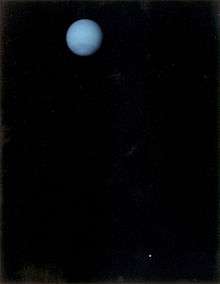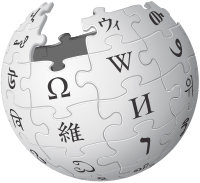Definify.com
Definition 2025
o'clock
o'clock
English

Neptune and Triton; the moon is between 5 and 6 o'clock with respect to Neptune.
Adverb
o'clock (not comparable)
- (modifying a numeral, one to twelve) In conjunction with a numeral, indicates the time within a twelve-hour period (midnight to noon or noon to midnight), specifically the time when the hour hand of a clock points precisely to the symbol or marking corresponding to the designated numeral.
- We are expected to be there at six o'clock in the morning!
- It is two o'clock.
- What o'clock is it? [uncommon]
- 1892, Sir Arthur Conan Doyle, The Adventures of Sherlock Holmes, HTML edition, The Gutenberg Project, published 2011:
- I say, Watson, what o'clock is it?
- 1935, George Goodchild, chapter 5, in Death on the Centre Court:
- By one o'clock the place was choc-a-bloc. […] The restaurant was packed, and the promenade between the two main courts and the subsidiary courts was thronged with healthy-looking youngish people, drawn to the Mecca of tennis from all parts of the country.
- (humorous) In conjunction with a term representing an action or event that occurs daily, indicates the time that said action or event occurs, or first occurs.
- 1880, Henrietta A. Duff, Honor Carmichael, page 251,
- That same evening at tea-time — (I am sorry to have to introduce you to another eating-scene, but the hours in English households are usually marked by repasts. It is a daily calendar of feasts — breakfast o’clock, dinner o’clock, &c., […] ).
- 1904, George Augustus Sala, Edmund Hodgson Yates, Temple Bar, Volume 129, page 144,
- “My sister requires your attendance at supper o’clock this evening — no excuse accepted.”
- 1998, Carolyn Greene, Heavenly Husband, page 129,
- “It's lunch o’clock. Wanna go out to eat?”
- 1880, Henrietta A. Duff, Honor Carmichael, page 251,
- (with a numeral, one to twelve) In conjunction with a numeral, indicates the direction, relative to the speaker, corresponding to the direction the hour hand is pointing at the time corresponding to the numeral, with twelve representing directly ahead and three being to the right.
- 1989, Aileen R. Lotz, Birding around the year: when to find birds in North America:
- It's at nine o'clock about two feet in from the edge of the branch. You need to know your "o'clocks" (nondigital) to spot birds.
- 1992, Herbert Benson; Eileen M. Stuart, Harvard Medical School. Mind/Body Medical Institute, The Wellness book, page 86:
- Without moving your head, move your gaze upward to look at twelve o’clock. Now look down at six o’clock. Repeat three times, then blink several times, and rest with your eyes closed.
- 1994, Peter Abramoff; Robert G. Thomson, Laboratory outlines in biology--VI, page 22:
- Thus, you could tell them to "look at three o'clock," or "look just off-center toward nine o'clock," and so forth. Alternatively, in some microscopes a thin black line appears to cut across the field of view
- 1997, Bill Thompson, Bird watching for dummies:
- Three o'clock and nine o'clock would be at the outer right and outer left sides of the tree, respectively, and so on. The clock technique is a very helpful way for one bird watcher to direct others to a hard-to-spot perched bird.
-
- Used to indicate direction on a plane, often vertical with 12 o'clock being straight up, representing a projection of the speaker’s field of vision.
Derived terms
terms derived from o'clock
Related terms
Translations
indication of time (the translations below are of "one o’clock")
|
|
the translations below are of "at one o’clock"
|
|
See also
- Appendix:O’clock
- Appendix:Time
-
 Clock position on Wikipedia.Wikipedia
Clock position on Wikipedia.Wikipedia
- sharp (e.g. 6:00 sharp)